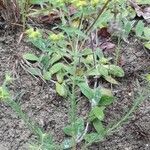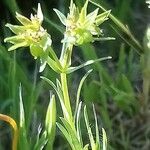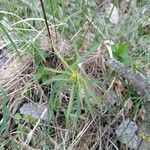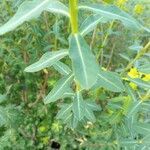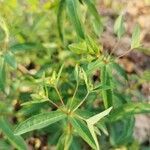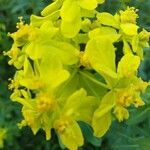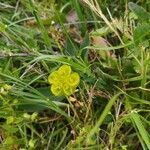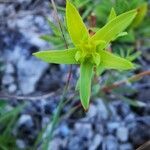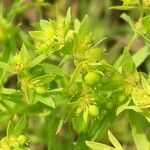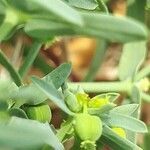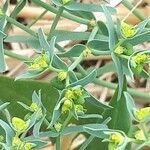Glabrous, erect annual. Stems up to 35 cm high, branched or not at base. Lvs alternate, exstipulate, sessile, entire, linear, obtuse at base, acute, 5-25 mm long. Terminal umbel 2-5-rayed, with often a few axillary rays arising below; lvs subtending rays similar to stem lvs but somewhat broader toward base; rays forming compound dichasia; lvs subtending cyathia triangular-lanceolate, acute, becoming ovate-triangular and cordate towards top of infl. Glands elliptic-oblong; horns long, slender. Capsule smooth, grooved, slightly ridged on keels. Seeds tuberculate or rugulose, 4-angled, grey-brown, c. 1.2 mm long.
Annual, 1–3 dm, often branched from the base; cauline lvs linear or linear-oblong, 1–2.5 cm, sessile, those subtending the umbel narrowly lanceolate, truncate or subcordate at base, those of the umbel similar but progressively smaller; rays of the umbel 3–5; seeds gray, 1–1.5 mm, finely and rather sharply tuberculate; 2n=16, 24. Native of Europe and w. Asia, sporadically intr. and established from e. Can. to W.Va. and O. Summer.
A small annual herb.
